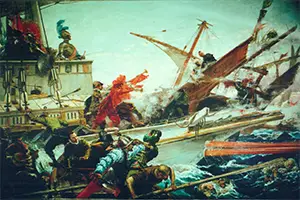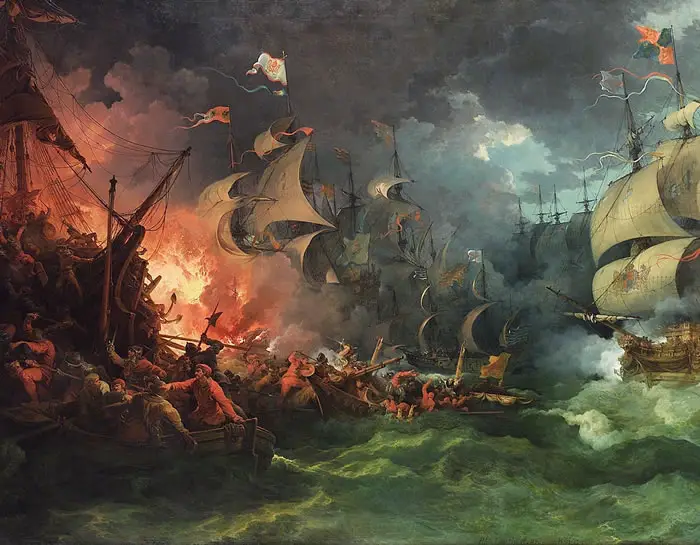King Philip II of Spain
Part 3: Failures and Successes After a wealth of preparations and expenditures, and with the full support of the pope, Sixtus V, Philip amassed a great fleet of ships and filled them with soldiers. In all, 151 ships sailed for Spain against Philip tried again, twice, in 1596 and 1597, with smaller armadas. The result was the same, each time.  One theater of war in which Philip was very successful was in the Mediterranean. His father had led the charge at times against the Ottoman ruler Suleiman the Magnificent, who was still in charge of the Eastern power when Philip came into his own. After a Turkish force captured the Balearic Islands and raided the Spanish mainland, Philip organized a response in the form of the Holy League, with allies the Duchy of Savoy, the Knights of Malta, the Papal States, the Republic of Genoa, and the Republic of Venice. After initial defeats, the Holy League scored a series of victories, saving the island of Malta from occupation and then destroying nearly the entire Ottoman fleet at the pivotal Battle of Lepanto in 1571. The two sides traded control of Tunis, with Spanish forces taking it in 1573 and losing it the following year. But the damage had been done at Lepanto, and a treaty in 1585 ended any Ottoman threat to expansion in the Mediterranean.  Under Philip's father, Charles V, the conquistadors Hernán Cortés and Francisco Pizarro had conquered the Aztecs and conquest of the Inca, respectively. The latter dragged on until 1572 and, thus, was completed during Philip's reign. Even though Philip was much more concerned with matters in Europe, the growth of New Spain, of Peru, and of the overall Spanish presence in the New World continued while he was on the throne. One part of that was the Philippines, which Ferdinand Magellan had visited in 1521 and claimed for Spain. The explorer Miguel López de Legazpi began the colonization of the islands in 1565. It was another explorer, Ruy López de Villalobos, who named the islands after Philip. Philip II died in 1598, of cancer. His son became King Philip III. First page > A Force in Europe > Page 1, 2, 3 |
|
Social Studies for Kids
copyright 2002–2024
David White



 England. Aboard these ships were 18,000 soldiers, 8,000 soldiers, and 250 large guns. The fleet was so large that it took two days (May 28 and 29) to leave port at Lisbon, in what is now Portugal. Two months later, English and Spanish navies clashed. The result was a devastating defeat for Spain. Very little of the
England. Aboard these ships were 18,000 soldiers, 8,000 soldiers, and 250 large guns. The fleet was so large that it took two days (May 28 and 29) to leave port at Lisbon, in what is now Portugal. Two months later, English and Spanish navies clashed. The result was a devastating defeat for Spain. Very little of the 
